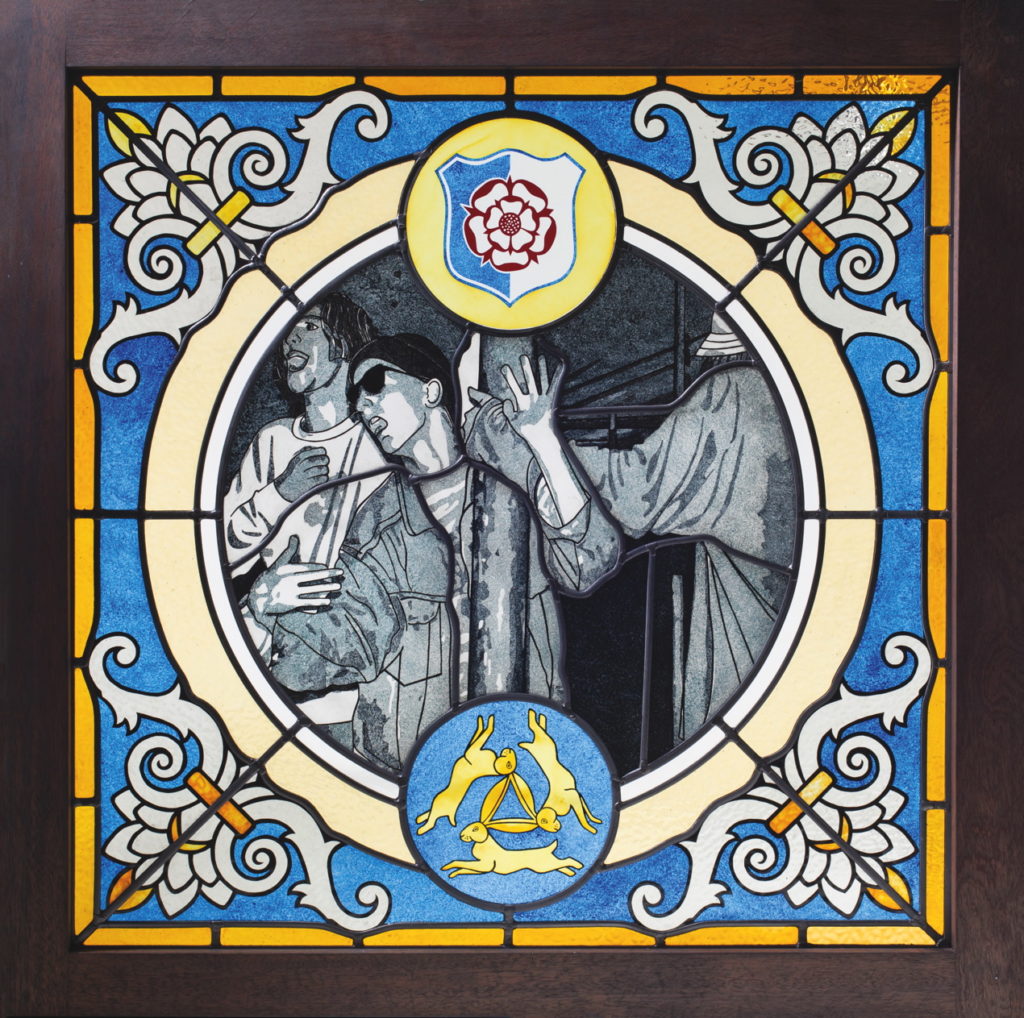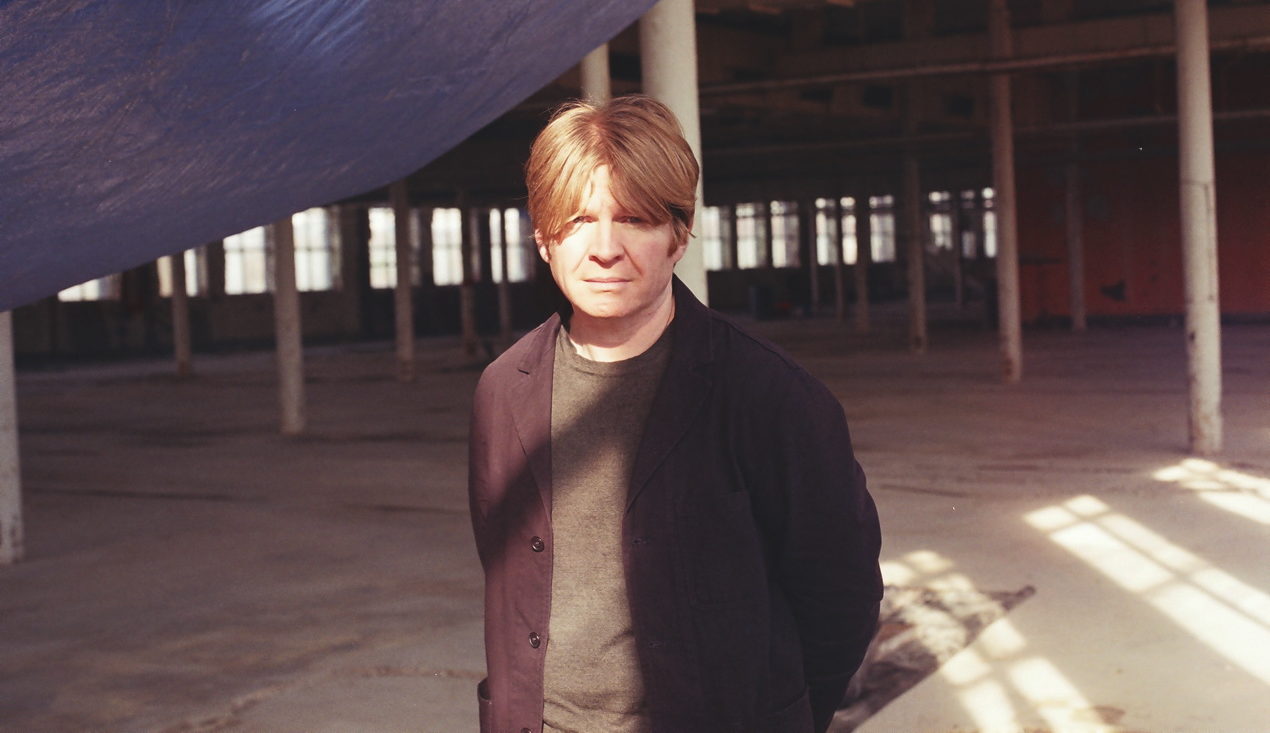A stitch in time
Blackburn’s textile industry is the thread running through a story of working-class culture that is no less potent for being overlooked by those who decide what art is
Grim. That’s the word Jamie Holman uses to describe Blackburn, when he was growing up there in the late eighties and early nineties.
“It was typical of towns in the North West, and I would imagine the north in general,” he says. “High unemployment and the decline of the textiles industry and jobs and communities associated with the mills also disappearing. I think I learned more from Factory Records and pop music in general than I did at school.”
Holman hotfooted it to Chelsea College of Art, unaware of a rich tapestry of art and culture that formed part of the history of the Lancashire town he was leaving behind. Now he’s artist in residence at the inaugural British Textiles Biennial, held in Blackburn, and determined to tell a different story.
“During this residency and in previous commissions I’ve become aware of working-class painters and mill poets – Blackburn had hundreds of poets who worked in the mills and were almost always self taught in terms of reading and writing – and the pioneering film-makers Mitchell and Kenyon, who made the first ever western.
“I wasn’t aware of much of this growing up, and certainly not the depth and the impact these artists, writers and film-makers have had on the wider culture.”
Holman is one of many artists, designers and makers exploring the politics of cloth over a month-long period this autumn. Commissioned by Super Slow Way, the inaugural Biennial programme highlights the nation’s creativity and innovation in textiles, against the backdrop of the impressive infrastructure of the cotton industry in Pennine Lancashire. With its epic mills and grandiose civic architecture along the country’s longest waterway, the Leeds and Liverpool Canal, this landscape tells the story of textiles. Holman will be presenting his work in a custom-made space in Church Street.
“Expect a large body of work that includes stained glass, films, sound recordings, union banners and performance, which all reference the spaces where people have gathered in Lancashire: from witches at Malkin Tower to casuals from Mill Hill and the terraces that founded the football league. I often use traditional crafts and fabrication to tell contemporary stories, or to explore unexpected collisions, for example a stained glass window memorialising acid house.”

The link Holman draws between the 19th century textile industry and the eighties rave scene emerged from watching Mitchell and Kenyon film footage of mill workers leaving in their thousands at the end of their working day.
“They leave in huge convoys, and of course arrive back the next morning,” he says. “When I was looking at footage from the acid house parties in Blackburn, and across Lancashire, it became clear that the grandchildren and great grandchildren of these workers were returning to these spaces and buildings, in convoys of thousands, and reclaiming the empty mills and warehouses to gather and dance. Communities, purpose and even high noise levels returned to these abandoned buildings in the most unexpected way. Without the Mitchell and Kenyon footage, I don’t think I’d have made the link, but visually it’s striking.”
Holman says he has uncovered a narrative that challenges the perceived notion that working-class males are reluctant to take up creative or artistic pursuits.
“I feel it’s an assumption based on what is classified as art,” he says, pointing out that the Textile Biennial includes an exhibition of Adidas Spezial trainers at Blackburn’s Cotton Exchange. It’s curated by Gary Aspden, the influential brand consultant and designer of the Spezial range, who was born in Darwen.
“This is an incredibly popular exhibition that engages large groups, some of whom are classified as not engaging in art and culture. But it is art and culture,” stresses Holman. “The trainers memorialise cultures and movements that include acid house, football and music, and are often hidden in plain sight. I love the idea of kids in Italy wearing Adidas Intack, Harwood, Whalley or Padiham – named after areas surrounding Blackburn – while Arts Council England consider Blackburn with Darwen to be an area of low engagement.”
By Arts Council marketing measures, Holman’s own family, he says, is classified under the category “A quiet pint with the match” because their creative output exists outside a recognised canon.
“It’s disappointing. It denies rich, vibrant cultural activity that includes terrace chanting, singing, clothes and rich poetic language. It’s a class issue.”
Holman now thinks of Blackburn as far from grim but instead as a town where extraordinary people did extraordinary things.
“In the factories and mills, where they were only ever expected to work until they dropped, these people defied slavery, often putting themselves in the workhouse or in extreme poverty over their principles. And when the mills, factories and warehouses were abandoned, we claimed them back and brought thousands of people together.
“It’s a story of transformation and of defiance. It’s a rich cultural heritage and needs to be visible. It tells us who we have been before, who we are now and, most importantly, who we may yet become.”

Leave a reply
Your email address will not be published.